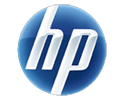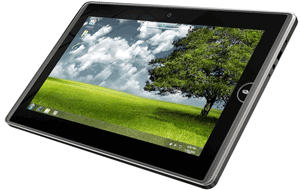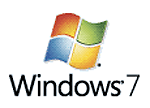HP’s bid to acquire Palm is now a done deal. It still isn’t willing to talk about the fate of its Windows 7 slate, though. Stay tuned…
Tag Archives | Microsoft. Windows
Windows 8 Details Emerge: Microsoft Embraces "Always On"
Windows enthusiast Francisco Martin got his hands on portions of a secretive “Windows 8” presentation, and posted some of the slides on his blog today. Microsoft allegedly presented the slides to computer manufacturers to preview the next version of Windows.
Microsoft wants OEMs to build PCs that rapidly wake up from sleep mode and are aware of their surroundings. The PCs should leverage hardware including Webcams and proximity sensors to recognize users and sense when those users are nearby their machines. It’s a logical step–not an innovative one so much as a necessary one.
The era of light computing has begun. Apple’s iPad is only the first among a new class of devices that turns on instantly, and gives the user access to the workflows that they want. The industry has been overselling hardware; most people don’t utilize their PC’s full capacity. Surfing the Web, writing an essay, or sending e-mails doesn’t require the latest and greatest hardware. The iPad’s popularity is an indication that people’s needs weren’t being met by the traditional PC paradigm.
That is not to say that the PC is going to be unseated any time soon, but its kingdom will be diminished. So, Microsoft has a challenging problem to solve: It needs to get Windows users to sit at their desks when more and more of their computing activities are happening with smart devices. “Always on” doesn’t fit that criteria; the iPad does that better than Windows can and did it first. The Windows interface also needs some work to work well on “slate” devices that it was not designed for. Don’t give me an elephant and call it a donkey.
There is however potential for an intelligent PC to really “know” its user and its environment, and it’s neat that Microsoft is looking into that. Windows 7 is selling well, and Microsoft has plenty of cash in its coffers. Windows Phone 7 demonstrated that the company is capable of fresh thinking. There is a similar opportunity with Windows, if Microsoft has the courage to press the reset button and try something new.
8 comments
Seven Copies of Windows 7 Per Second: Fast! But How Fast?
 Microsoft PR honcho Frank Shaw has a fun post up on the official Microsoft blog. It starts with Microsoft’s calculation that seven copies of Windows 7 have been sold every second since the OS was released, then quotes other bits of math relating to the company and its competitors. His point: Microsoft sells stuff and serves customers on a truly massive scale that few companies can match.
Microsoft PR honcho Frank Shaw has a fun post up on the official Microsoft blog. It starts with Microsoft’s calculation that seven copies of Windows 7 have been sold every second since the OS was released, then quotes other bits of math relating to the company and its competitors. His point: Microsoft sells stuff and serves customers on a truly massive scale that few companies can match.
There’s something inescapably appealing about calculating how many copies of a popular product are sold per second, even though it suggests some sort of perfectly steady state of commerce that doesn’t exist. (For me, at least, it brings to mind a supermarket checkout stand with Superman–or possibly the Flash–scanning items at superheroic velocity and ringing them up on an old-timey cash register that actually goes “kaching!”) And the seven-copies-of-Windows-7-every-second factoid got me wondering how rapidly other popular products of the present and past have sold. So I did the math.
The figures below are profoundly inexact: They’re based on sales estimates which may be way off in some cases, and periods which are often vaguely defined. I rounded off the numbers,wasn’t obsessive enough to take leap years into account, and calculated some overall averages for lengthy durations. You may analyze the same available data and come to different conclusions, or decide that it’s pointless to make any calculations whatsoever. But I still think these guestimates provide an interesting frame of reference.
12 comments
HP's Windows Slate PC: Not Officially Dead, But Dead

I’m at The Big Money’s Untethered conference–an event about tablets and the future of publishing–in New York. One of the speakers this morning was Phil McKinney, CTO of HP’s Personal Systems Group. The Big Money’s James Ledbetter interviewed him about tablets, and he talked about the downsides of using existing operating systems for new types of devices. (He didn’t mention Windows explicitly, but I’m pretty sure he wasn’t talking about OS/2.) He also extolled the virtues of WebOS, which HP will own assuming its acquisition of Palm goes through.
50 comments
Windows 7 SP1 On Its Way
While Apple is hosting developers and IT types in San Franciso, Microsoft is doing the same at its Tech-Ed conference in New Orleans. And one of the pieces of news out of Microsoft’s event is that Windows 7 SP1, the first megapatch for the current version of the company’s operating system, will be available as a public beta next month and should be finalized by the end of this year.
SPI is nothing more than all the fixes that Microsoft has released for Win 7 so far rolled into one update–and if my experience so far is typical, even the initial version of the OS was surprisingly robust. But if you’re the type who likes to wait for a major update before upgrading your operating system, now’s the time to start thinking about Windows 7.
No comments
Microsoft Unveils a (Somewhat) Tablet-Friendly Version of Windows
It still isn’t clear what Microsoft’s long-term tablet strategy is going to be. But here’s a bit of new info: At Computex in Tapei, it announced Windows Embedded Compact 7 (gotta love those Microsoft product names!), a slimmed-down version of Windows capable of running on minimalist tablet hardware, with support for touchscreens. As Engadget reports, the company also showed off a passel of Windows tablets, albeit under glass.
I still think that a serious version of Windows for tablets needs a substantially new user interface, not to mention a whole infrastructure for encouraging third-party developers to write touch-centric apps. Windows Embedded Compact 7 doesn’t appear to be that OS…
One comment
In Search of Microsoft's Tablet Strategy
 It’s Memorial Day in the U.S., but in Taipei, it’s time for Computex–the show that serves as an excellent freeze-frame of what the PC industry is excited about at the moment. Judging from the news so far, what it’s excited about is the iPad.
It’s Memorial Day in the U.S., but in Taipei, it’s time for Computex–the show that serves as an excellent freeze-frame of what the PC industry is excited about at the moment. Judging from the news so far, what it’s excited about is the iPad.
As Engadget is reporting, Asus is showing off something called the Eee Pad at the show–a vaguely iPad-esque looking device that runs Windows 7, packs an Intel ultra-low voltage CPU, and (like the iPad) claims ten hours of battery life on a charge. It’s safe to say that Asus still has heavy lifting to do to make the Eee Pad a reality: It isn’t planning to ship it until next year. By then, it’ll face competition from other Windows 7 tablets, such as this Computex debutante from MSI, not to mention Android tablets (MSI is showing one of those, too)
9 comments
A Faster VMware Fusion
VMware Fusion–along with Parallels Desktop, one of the two primary ways that folks virtualize Windows into running on Macs--just got an upgrade. The version number is only jumping from 3 to 3.1, but it sounds pretty meaty for a point release: VMware says it’s 35 percent faster (with a particular boost in 3D performance), has better features for migrating a real Windows PC’s OS onto a Mac, handles USB devices more gracefully, and makes Windows apps behave even more like Mac ones (including letting you use Mac keyboard combinations).
People who want to run Windows on a Mac are blessed with a difficult choice: Both Fusion and Parallels are outstanding pieces of software. But Parallels has outperformed Fusion in recent speed tests. If VMware’s claims are realistic, Fusion just eliminated performance as a major difference between the two products.
The upgrade is free for Fusion 3 owners, $39.99 for users of previous versions, and $79.99 for new customers.
One comment
Windows 7 Boosts Microsoft's Rep
 The University of Michigan’s American Customer Satisfaction Index (ACSI) survey rates consumers’ opinion of a bunch of industries and major companies. Only one software outfit is big enough to receive an individual score. That would be Microsoft, and the report for the first quarter of 2010 has the company with its highest rating ever–76 out of 100. That’s a meaningful boost over its rating over the past few years, and the report’s analysis credits the improvement to the end of the Windows Vista era and the beginning of the Windows 7 one.
The University of Michigan’s American Customer Satisfaction Index (ACSI) survey rates consumers’ opinion of a bunch of industries and major companies. Only one software outfit is big enough to receive an individual score. That would be Microsoft, and the report for the first quarter of 2010 has the company with its highest rating ever–76 out of 100. That’s a meaningful boost over its rating over the past few years, and the report’s analysis credits the improvement to the end of the Windows Vista era and the beginning of the Windows 7 one.
Note that the lowest Microsoft’s score got–69–was blah but not that blah: For instance, Comcast got a 61 this quarter. And while the 76 represents a nice bounceback, that score is also the average for the entire software industry. Which means that Microsoft’s result is, well, average.
Microsoft and Windows are close enough to being synonymous that it’s no shocker that the company’s reputation suffered the long national nightmare that was Vista–or that Windows 7 seems to be helping.
Your take?
8 comments
HP Slate: So Long Windows 7, Hiya WebOS?
I started out thinking that the rumor that HP was canceling its much-hyped Windows 7 “Slate PC” strained credulity. But it’s been a couple of weeks since the idea surfaced, and HP isn’t denying it. Which isn’t a good sign–if everything was fine, wouldn’t the company say so?
Now GottaBeMobile is reporting that an allegedly excellent source says that HP is ditching Windows 7 and replacing it with the operating system it just bought: Palm’s WebOS, on a slate code-named “Hurricane.” You’d think it would take awhile to reengineer WebOS to work well on a larger device, making a release in the next few months unlikely–or has Palm been secretly tackling that challenge all along?
